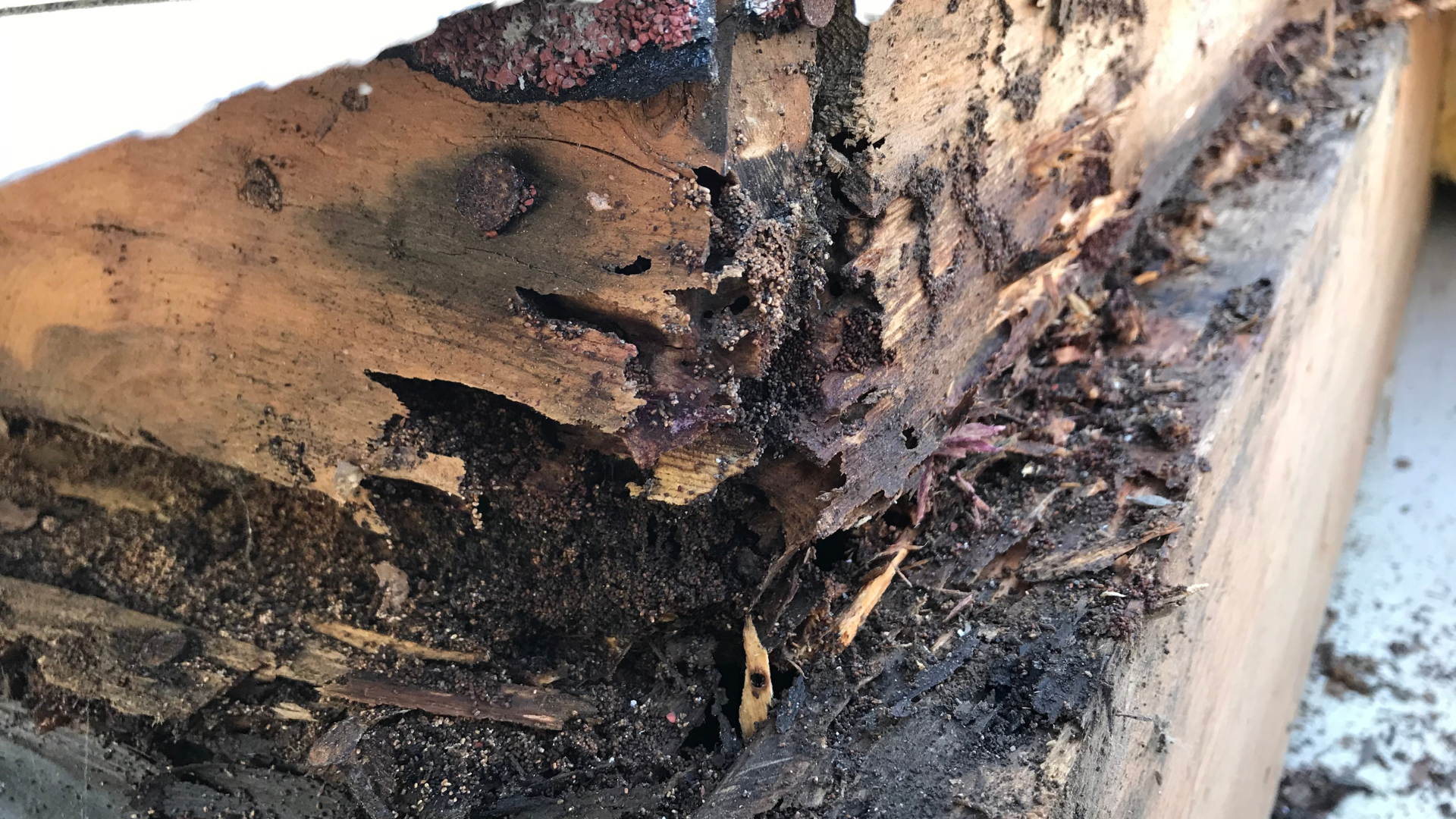Termites are some of the most destructive household pests in the world, causing billions of dollars worth of damage globally each year. Unfortunately, they are also notoriously tricky to eliminate, making these pests a nightmare for most homeowners.
Luckily, there are steps you can take to prevent termites from destroying your home, as well as some key signs to look out for to determine if you’re dealing with an infestation. By familiarizing yourself with these pesky pests, you can save yourself a lot of money and stress by knowing how to tackle an infestation head-on.
Signs of a Termite Infestation
Termites can live in homes for many years without being noticed. Therefore looking out for signs of a termite infestation you might not be aware of is critical to stopping them early.
- Wood Damage: Termites will often cause damage to the wood in your home that can be identified by bubbling paint, buckling wood, and small pinholes in drywall.
- Mud Tubes: Mud tubes are small, pencil-sized tunnels built by termites to travel to different colonies. You can usually spot these on the siding of your house or near basements/crawl spaces.
- Discarded Wings: If you see discarded insect wings around the house, this could be a sure sign of a termite problem.
- Sticking Windows & Doors: Termites produce moisture when they feed, which can cause your windows and doors to stick together.
- Swarmers: Swarmers are often mistaken for ants, but these flying insects are actually termites that have left their colonies to find mates and build new colonies.
How to Identify Termites
Termites are commonly mistaken for carpenter ants or other small insects, so it is important to be able to identify them if you suspect an infestation in your home. Termites typically fit the following description:
- ¼ to ½ of an inch long
- Straight antennae
- Range in color from white to dark brown
- Kings and queens are larger
- Swarmers have wings
- Subterranean termites live in large colonies underground, while dry wood termites are found in wood above ground level
DIY vs. Professional Termite Control
If you discover that you are dealing with a termite infestation, you may be exploring different treatment options. Some people opt to take a “do it yourself” approach, especially those working with a tight budget.
Borax is a home remedy that is commonly used to treat termite infestations, and it can be used in either powder form or mixed with water to kill both subterranean and drywood termites. Most name-brand termiticides are effective at killing these insects but are not guaranteed to wipe out a colony.
While there are several DIY methods you might want to try, it is always best to reach out to a pest control professional when dealing with a difficult infestation such as termites. A professional not only provides effective and safe treatments for your home, but they can also perform inspections to see whether termites are eliminated in their entirety.
Subterranean Termite Treatments
Subterranean termites live in nearly every state in the US and are commonly found in basements, floors, and cellars.
When it comes to eliminating subterranean termites, the Sentricon System is one of the most commonly used and effective methods. The Sentricon System works by placing baits in the ground in order to lure termites. Once the termites find the bait, they will unknowingly carry poison back to their colony, killing the other termites. Our Czar Guard home maintenance plan offers the Sentricon System at different price points, so you can choose a plan that works for you!
Drywood Termite Treatments
Drywood termites are most commonly found on the west coast but have occasionally been known to damage homes as far as the east coast. These termites are typically found in wooden furniture, such as cabinets and chairs, making them easier to spot.
Fumigation is the most common method to eliminate dry wood termites with the use of termite tarps. Termite tarps are placed over a home or building to help contain the fumigant as it spreads in order to kill any termites on the property. Fumigation can only be used by pest control professionals and is known to be extremely effective in getting rid of drywood termites.
Termite Prevention Tips
When it comes to treating termites and other pests, prevention is always the best method. Here are some easy termite prevention tips to implement in your home.
- Conduct regular termite inspections
- Seal open cracks and crevices in your home
- Get rid of excess moisture
- Regularly inspect your wood
- Don’t use too much mulch outside of your home
- Clean your yard and gutters often
FAQs
Can you treat termites at home by yourself?
While there are many products on the market that claim to get rid of termites, your best bet is to seek the help of a pest control company. Termites can be extremely hard to get rid of, and you may end up doing more harm than good if you attempt to take matters into your own hands. A trusted pest control professional will assess the severity of the infestation and come up with a unique treatment plan, as well as conduct regular termite inspections to ensure the problem doesn’t return.
What essential oils keep termites away?
Termites are known to dislike the smell of orange oil, cedarwood, geranium, and tea tree oil, so diffusing these oils in your home might be worth a shot if you’re dealing with a termite infestation.
How many years does it take for termites to destroy your house?
On average, it can take anywhere from three to five years for termite damage to become visible in a home. In five to six years, termites could do significant damage to the structure of a home, causing homeowners thousands in repairs.


